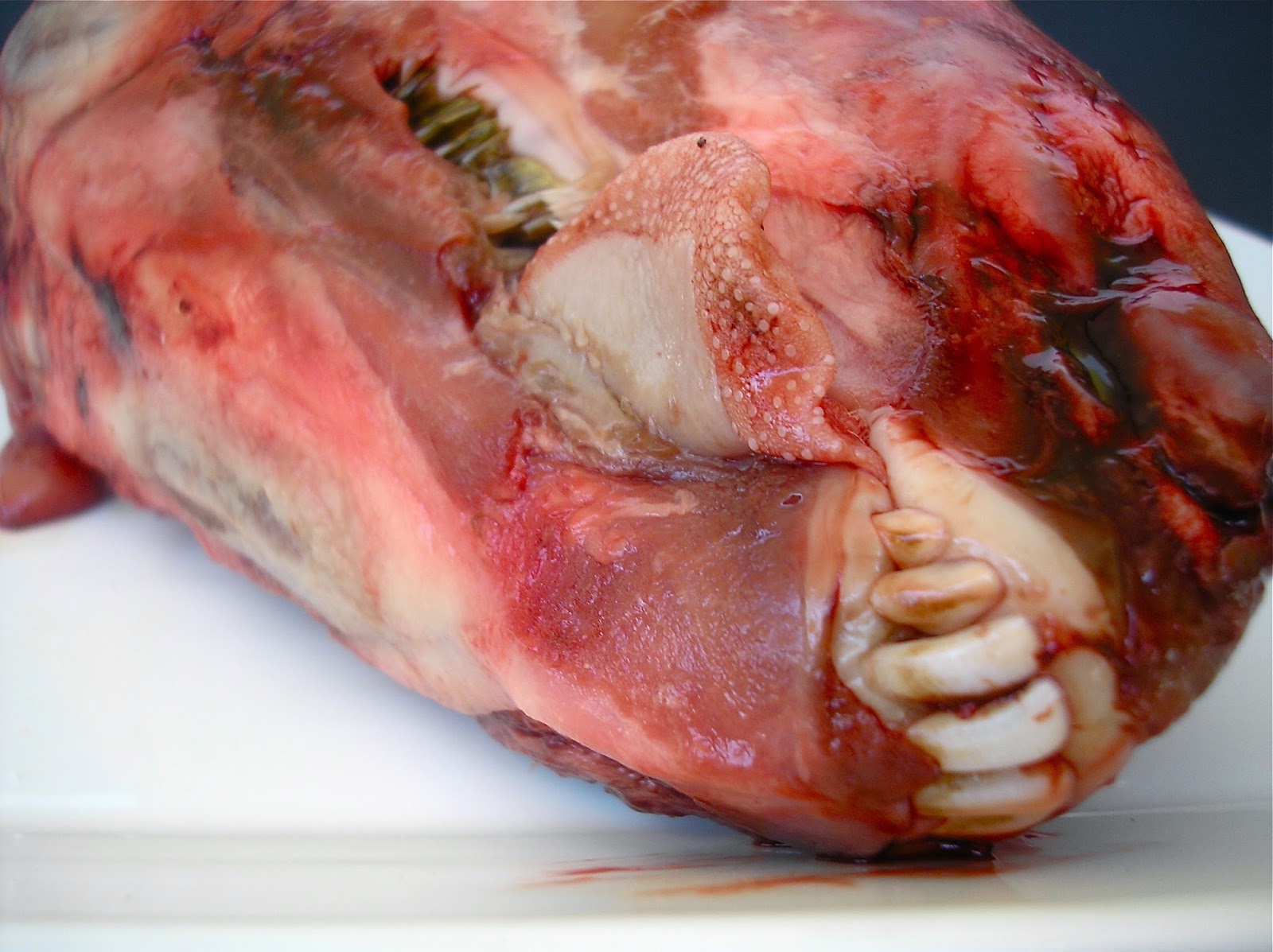 |
Pickled Organic grass-fed Lambs tongue with Sous vide Baby beetroot in raspberry sauce, Sheep's milk Curd snow, Apple & German chamomile oil and chamomile leaves. |
After the tongue was detached and removed from the sheep head, I rinsed the tongue under cold running water before placing the tongue into a glass container. I then prepared a brine of salted water, covering the tongue with the brine and refrigerating overnight covered. The next day I rinsed the tongue under cold running water again before this time simmering the tongue on a medium heat in a brine of water, apple cider vinegar and salt for about 2 hours until the tongue was tender. The tongue was then rinsed again and the outer membrane was removed. In a saucepan I brought to the boil some water, vinegar, salt, sugar, mustard seeds, fennel seeds, cumin seeds, coriander seeds and peppercorns. I then placed the tongue into a sterilised jar and covered the tongue with the cooled pickling liquid, securing the jar with a lid, the the tongue was placed into the fridge and allowed to mature for 3 weeks. To make the curd snow, I first made the curd as per earlier posted this month. Only once the curd was drained of all its whey, I formed a ball with the curd and placed it into the freezer to freeze solid. Once the curd was solid, using a grater I shaved the frozen curd to form a powdery snow. In a small saucepan I gently heated some olive oil with a few strips of apple peel and some german chamomile leaves. The oil was then removed from the heat and allowed to stand and infuse until cool. The oil was then strained through cheese cloth and ready to be used. The last application was the beets of which I simply peeled, quartered and placed into a food grade plastic pouch with some frozen raspberry sauce. The pouch was vacuum sealed and placed into a 84C water bath for an hour. The beets and sauce were then removed from the pouch and chilled before being served.





























